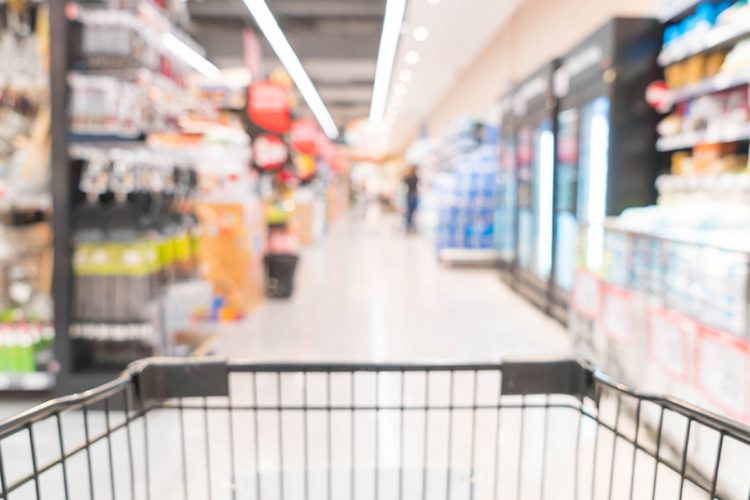Since the onset of the COVID-19 pandemic, life as we know it has completely changed. Every company has had to fundamentally alter its approach to conducting business in the new normal. Whether it be in the FMCG industry, service sector, IT sector, or even the agricultural sector, every company providing any kind of goods or services has had to majorly adjust to sudden changes in the availability of raw materials, supply chain constraints, limitations in transportation and movement, and even labor shortages.
Himalayan Natives was no exception to this. As a food brand, we have always taken food safety precautions and hygiene in the entire production process extremely seriously. The ‘new normal’ brought on many more constraints to the operational process as securing reliable vendors, steady supply chain management, and consistent production to meet increasing demand became trickier and more crucial. However, the biggest shift that we saw, and perhaps the entire FMCG sector observed, was the sudden and exponential growth of the eCommerce industry.
The E-Commerce Boom
As a general trend, India has seen a growing market in online retail in the last decade or so, with platforms such as Flipkart and Big Basket offering more and more FMCG products and improved delivery services. However, the COVID-19 pandemic imposed severe movement restrictions for both people and businesses, and this led to an exponentially increased reliance on e-commerce for consumers and businesses for goods transactions. According to the India Brand Equity Foundation, the online grocery market of India is expected to reach $18.2 billion in 2024 from only $1.9 billion in 2019. And, this growth is not just limited to metropolitan cities and areas with higher populations. In fact, Flipkart noted a new user growth of nearly 50% post-lockdown, with tier III regions registering a growth of 65% new users. These numbers demonstrate a dramatic shift in the shopping habits of Indian consumers to online platforms, especially for essential commodities such as food and beverages.
Given how abrupt this shift was, brands found the need to evaluate the strength of their online presence on major platforms such as Flipkart, Big Basket, and Amazon. The popularity of these platforms in addition to a crucial dependence on them led to higher customer retention rates for many FMCG sellers on these platforms. Himalayan Natives was quick to establish an online presence on Flipkart and Big Basket early on during the pandemic, and we closely followed it by registering on Amazon, Paytm, and others. Expanding the availability of our products on multiple platforms helped us greatly increase our brand visibility and relevance in the Food & Beverage sector. In fact, since establishing a presence on these major ecommerce channels, Himalayan Natives’ sales experienced a 35% month on month increase in the last 6 months.
Optimizing Our Website
In addition to capitalizing on the existing popularity of these eCommerce sites, some brands also began to evaluate the effectiveness of their own online platforms. This is something Himalayan Natives was also faced with. Observing that our website was more informational than transactional, we immediately began to work on making it more e-commerce-friendly in early 2021. The interface was developed to be more efficient and user-friendly in order to increase customer retention. Additionally, each product page was updated to include useful information about the product in an effort to educate the consumers on the product benefits. These are just a few of the ways in which our website has been improved to up our e-commerce game and meet the increased demand for our products.
Logistical Imbalances
While efforts in establishing a strong online presence are crucial for any brand trying to compete in the eCommerce market, an often-overlooked factor that determines the success of these efforts is the strength of the brand’s supply chain to meet the demand. If a company’s logistical systems are weak - unreliable vendors, limited delivery partners, inefficient warehouse processes - the company will quickly begin to deal with imbalances in the supply and demand for their products. This is something that rang especially true during the pandemic when online retailers were the only source of groceries for most consumers. Many brands that were unable to keep up with such imbalances and sudden supply chain constraints ended up losing customers and in turn, revenue.
Himalayan Natives was quick to respond to the supply chain constraints that we faced in early 2020. A combination of strong leadership and quick thinking helped us secure our sourcing partners locally so that we wouldn’t be affected by inter-state movement restrictions and establish reliable delivery partner relationships that ensured there were no hiccups in the supply chain from start to finish. Because of this, our efforts to improve our brand visibility on online marketplaces and our own website were met with a smoothly operating logistics system that helped us achieve overall growth at a time when many businesses were struggling.
It is clear that the COVID-19 pandemic has had massive and long-lasting effects on the way businesses operate and what that means for us as a society. The accelerated takeover of eCommerce and online retail is perhaps one of the most visible outcomes of the pandemic, regardless of how abruptly it took place. The major shift in the shopping behaviors of Indian consumers has allowed many brands to digitize their businesses and forced them to evaluate how online transactions can be a game-changer for them in terms of brand visibility, access to a much larger database of consumers, and how they restructure their operations to capitalize on these factors. Himalayan Natives has always been well aware of the advantages of online retail and the effects of the pandemic have allowed us to build a business strategy that is guaranteed for growth.
 HELPFUL0 people found it helpful
HELPFUL0 people found it helpful
Related Blogs
Subscribe to Our Blogs
and never miss on the latest update!

















